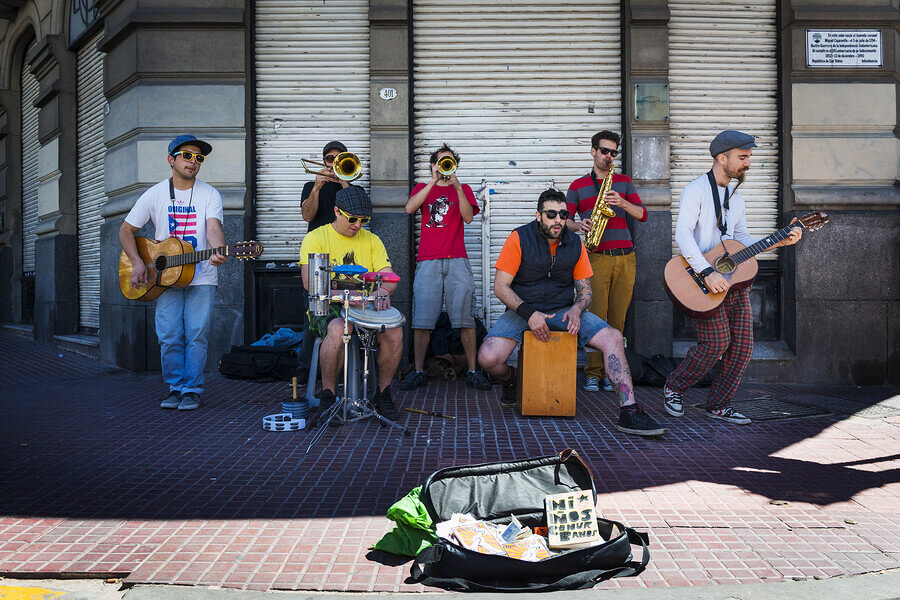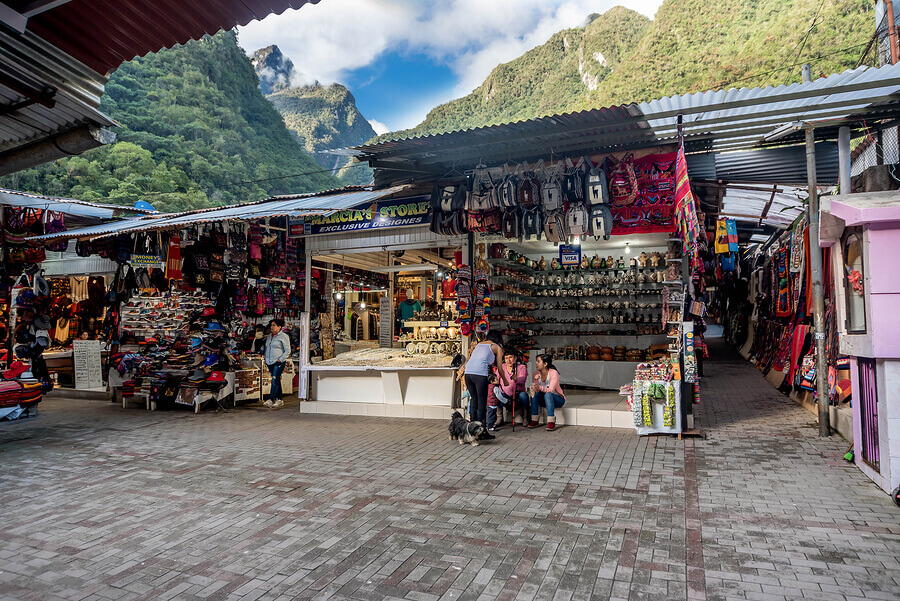
Street performers in Buenos Aires.
South America is one of the most stunning holiday destinations in the world.
So to make the most of your trip, we advise learning a phrase or three in order to help you communicate more easily with the locals.
Brushing up on a few words and sentences will generally make your journey less stressful and make your excursions a lot more straightforward.
Aside from its obvious practical uses, learning a little of the local lingo is also a sign of respect and appreciation for the various cultures of South America.
On a basic level, it shows that you’ve made an effort, which is something that is universally appreciated.
It’s also a great way of practising your language skills if you’re looking to improve. After all, there’s no better way of becoming fluent in any language than surrounding yourself with the native tongue.
Finally, it’s a great way of immersing yourself in the culture. Speaking in another language gives you a sense of the rhythm of everyday life in South America.
What languages are spoken in South America?
The most commonly spoken language on the continent is Portuguese.
However, it’s not completely dominant in the same way that English is in the United Kingdom.
Spanish comes in at a very close second, with only a slither less native speakers than Portuguese.
But that’s not all.
There’s also the languages that are spoken in distinct regions that have their origin in former colonial powers.
These include English on the Falkland Islands and in Guyana, French in French Guiana and Dutch in Suriname.
Aside from that, there’ also a whole host of indigenous languages: most of which operate alongside another language, usually with colonial roots.
While there are over 135 confirmed indigenous languages, there are some that are more widely spoken than others.
The most popular is Quechua, which is spoken in Peru, Bolivia and Ecuador and has nearly nine million native speakers.
Other popular examples include Guarani and Aymara, which have over four and two million speakers respectively.
They cover the likes of Chile, Argentina and Paraguay, to name a few.
So where exactly to start?
If this all sounds a little overwhelming, don’t worry.
South America may have a vast variety of different languages, but that doesn’t mean you’ll have to become a hyperpolyglot in order to hold a conversation.
In the vast majority of South America, knowing a touch of Spanish and Portuguese should be more than enough to avoid any confusion.
We’ll be going through some key phrases in both Spanish and Portuguese that will cover you in most South American destinations.
If you don’t already know, be sure to look up which language is spoken in the region where you’re visiting, so you know which information is relevant to you.
Simple Spanish phrases
Hola – Hello
Adios – Goodbye
¿Cómo está? – How are you? (If you do not know the person)
¿Cómo estás? – How are you? (If you do know the person)
Buenos días – Good morning
Buenas tardes – Good afternoon
Buenas noches – Good evening
Mucho gusto – Nice to meet you
Por favor – Please
Gracious – Thank you
¿Habla inglés? – Do you speak English?
Hablo un poco español – I speak a little Spanish
¿Por qué? – Why?
Disculpe – Excuse me
Dinero– Money
Simple Portuguese phrases
Olá – Hello
Tchau – Goodbye
Como vai? – How are you?
Bom dia– Good morning
Boa tarde – Good afternoon
Boa noite – Good evening
Prazer em conhecê-lo – Nice to meet you
Por favor – Please
Obrigado – Thank you
Você fala inglês? – Do you speak English?
Falo um pouco de português – I speak a little Portuguese
Porque – Why?
Com licença – Excuse me
Dinheiro – Money
Spanish phrases for restaurants
Una mesa para dos/tres/quatro – A table for two/three/four
¿Cuánto es? – How much is it?
Sólo la cuenta – Just the bill
Un menú– A menu
Una bebida – A drink
Agua – Water
Cerveza – Beer
Vino tinto/Vino blanco – Red wine/White wine
Un café – Coffee
Una entrada – An appetizer
Un postre– A dessert
La cuenta – The check
Portuguese phrases for restaurants
Mesa para dois/Uma mesa para tres/quatro – A table for two/three/four
Quanto e este? – How much is it?
Apenas a conta – Just the bill
Um menu – A menu
Uma bebida – A drink
Agua – Water
Cerveja – Beer
Vinho tinto/Vinho branco – Red wine/White wine
Um aperitivo – An appetizer
Uma sobremesa – A dessert
A conta – The check
Understanding directions in Spanish
Derecha – Right
Izquierda – Left
Derecho – Straight ahead
En la esquina – At the corner
Understanding directions in Portuguese
Direita – Right
Esquerda – Left
Direto em frente – Straight ahead
No esquina – At the corner


